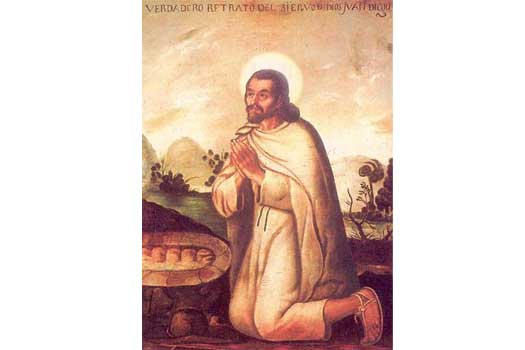Mary appeared to Juan Diego (named Cuauhtlatoatzin, or “eagle who speaks” in his native language) on December 9, 1531 on Tepeyac hill outside Mexico City. Ten years earlier the Spanish conquistador Cortes had invaded Mexico, followed by the arrival of the first Franciscan missionaries. Juan Diego had been among the first converts to Christianity, and he was walking to Mass on a cold Saturday morning when he heard someone calling his name. Mary appeared to Juan Diego as a young indigenous girl and told him to tell the local bishop that she wanted a shrine built to her on that spot. Juan Diego did as the Lady asked, though at first the bishop did not believe him. On December 12 (the feast of Our Lady of Guadalupe) Mary again appeared to Juan Diego, and this time, she provided him with the sign that the bishop needed to be convinced; she provided roses, in the middle of winter, for Juan Diego to bring to the bishop. When Juan Diego unfolded his tilma to reveal the roses to the bishop, he found as well the miraculous image of Our Lady of Guadalupe imprinted upon the cloth. In the next few years, as news of the apparition spread, the Catholic faith took hold in Mexico and eight million native Mexicans converted. Our Lady of Guadalupe is the patron saint of the Americas, and Juan Diego became the first Native American saint when he was canonized by Pope John Paul II in 2002.
Question for Reflection:
-
When have you experienced God working through a “ripple effect,” starting with a small event or a seemingly unimportant person, and spreading out beyond what could have been expected?
-
What “signs” of God’s presence have you witnessed?

